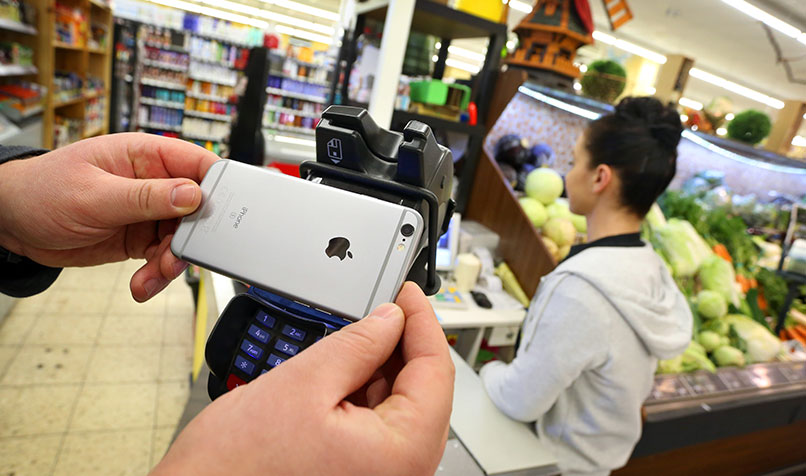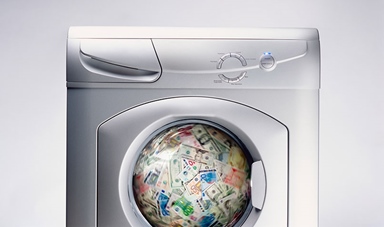Loading component...
At a glance
- Hygiene concerns around physical cash have driven a worldwide uptick in the use of digital payments.
- The shift spells out benefits in the form of efficiency, fewer risks of errors, and more transparency in tax collection.
- However, a completely cashless society can mean challenges for certain demographics that rely heavily on cash.
When the World Health Organization (WHO) released a statement on 9 March recommending that people turn to digital payments to fight the spread of COVID-19, the march toward cashless societies suddenly picked up pace. In countries such as China and South Korea, thousands of banknotes were destroyed or disinfected to eliminate the spread of the virus.
The US Federal Reserve began quarantining cash from countries struggling to flatten the COVID-19 curve. Even cash-centric economies such as Japan recorded a spike in digital payments.
Tap and go
Cash payments in countries like Australia were on the slide well before the threat of COVID-19.
Charities including Movember, The Salvation Army and Legacy have been rolling out tap-and-go donation machines to capture revenue, while many vendors of The Big Issue magazine, which is sold on the streets by homeless, marginalised and disadvantaged people, now accept PayPass.
At the November 2018 Australian Payments Summit, Dr Philip Lowe, governor of the Reserve Bank of Australia, described a future where “cash becomes a niche payment instrument”.
Data from Australian Payments Network shows that while the country has one of the world’s highest penetration rates for electronic funds transfer at point of sale (EFTPOS), with more than 975,000 terminals, the number of ATMs has fallen below 30,000 for the first time since December 2010.
Real-time payments, in which money is transferred between bank accounts in less than a minute, are now available in Australia via the New Payments Platform (NPP). There has also been growth in flexible payment options from fintechs like Beem It and Afterpay, and the pace of payments has been accelerated by services like Osko by BPAY, and digital wallets such as Apple Pay and Alipay.
The plus side
Hygiene concerns during COVID-19 have added to the list of costs that cash now represents. There’s the capital expenditure of installing a cash register and secure storage, and manual handing of cash can be time consuming and cumbersome, with daily counting and reconciliation, packaging and delivery to the bank.
For larger businesses, where finance teams are not located at the point of cash acceptance, discrepancies can also be a common occurrence, and their investigation cuts into the valuable time of finance, management and operational staff.
There’s also the issue of tax evasion.
“People won’t be paying cash under the table to various service providers,” says Richard Holden, professor of economics at the University of New South Wales Business School, who estimates a cashless society would generate between A$6 billion and A$10 billion in additional tax revenue.
“You’ll see an uptick in income tax, an uptick in GST collection, and it also stops the main lubricant of the black economy. It is so much harder to deal in illicit substances if there’s a money trail going through the financial system.”
Holden is known to have said the transition to a cashless economy would occur in as little as three years – even prior to the COVID-19 crisis.
“You’d start by getting rid of the A$100 bills in year one, the A$50 in year two and get the rest of it out in year three to give people time to adapt,” he says. “The pandemic will accelerate this. It’s hopeless for most businesses to accept cash. It’s awkward, it’s clunky and it’s time consuming.”
The minus side
Dominique Lamb, CEO of the National Retail Association (NRA), says retailers have seen a significant decline in cash payments during the pandemic. While businesses cannot refuse to accept legal tender, she says many have asked their customers to use card payments wherever possible to minimise cash changing hands.
“This has been made easier by the banking industry doubling the threshold for tap-and-go payments to A$200,” she says. “It may turn out to be a permanent shift in behaviour, and we never return to the previous level of cash handling.”
"It may turn out to be a permanent shift in behaviour, and we never return to the previous level of cash handling."
If this were the case, Lamb says bank fee structures would need to change as the boost in cashless payments during COVID-19 has led to higher chargers for retailers.
“For many, these will be very difficult to manage at this time,” she says. “The NRA has joined with other business groups to ask banks to waive merchant fees until the crisis has passed.”
Spreading the risk

Brett Watson, KPMG partner payments advisory, says that while cash transactions have declined during COVID-19, it’s important to “look beneath the stats”.
“We’re all ordering more online at the moment, because day-to-day life has been restricted, so it’s not a surprise that cash has dropped versus the number of digital wallet or internet transactions going up,” he says.
“Whether or not cash will bounce back eventually is something that we can’t be entirely sure of yet, but I can’t see it disappearing any time soon because there are demographics such as the elderly that still rely heavily on cash, and for them not to be able to use it would put a whole group of people at a significant disadvantage.”
Watson adds that a completely cashless society would also require a robust payments system.
“Merchant acquiring systems go down from time to time, and it causes massive issues,” he says. “You need a resilient payment system, and part of that is not overly relying on one payment method or one technology.”
Watson says that as the bulk of face-to-face electronic payments in Australia increases, cash remains an important back-up.
“When there are outages with banks, not only is EFTPOS down, sometimes the ATMs are down, sometimes internet banking is down. Unless you’ve got cash in your wallet, you’re stuck.”
Fintechs lead the charge

Payment systems in Australia are becoming more sophisticated thanks to innovative real-time solutions from the growing fintech sector, which is ranked among the top five countries globally for fintech activity. The category of “payments, wallets and supply chain” is the fourth-highest area of focus, according to the Australian Payments Network.
In 2018, just 12 per cent of Australians were using real-time payment solutions. This is expected to grow to almost 70 per cent by 2023.
Payments app Beem It was launched in 2018 with backing from Westpac, Commonwealth Bank and NAB. It allows users to instantly send, receive and request money from other Beem It users, regardless of who they bank with.
The Beem It app has been downloaded more than 900,000 times. Jason Backhouse, head of operations at Beem It, says that while the number of downloads has continued to grow this year, there have been fewer transactions during COVID-19.
“What we are noticing is a change in the nature of transactions,” he says. “One of the nice things that’s come out of COVID-19 is that people are sending gifts to each other, or sending payments to each other, to say, ‘Here’s dinner on me, Mum and Dad’. Previously, you would have had to call them up to get their BSB and bank account number.”
Backhouse adds that Beem It is also being used as a virtual tip jar in cafes. “Musicians are also putting up a post online and saying, ‘Here’s my Beem It handle, flip me a few dollars if you like the music’.”
Beem It’s core customer base is millennials and Generation Z, but Backhouse says that as it releases new features, such as the ability to wrap up payments as a gift or to track expenses around Christmas time, older demographics will become more attracted to the app.
“I think our proposition naturally fits with younger demographics,” Backhouse says. “If you think about people who need money instantly, it’s the university kids at the bar, but now we’re seeing the younger generation bring on the older generation where there’s value.”
While COVID-19 has affected cash payments in countries like Australia, Watson points to countries such as Russia, where citizens have been stockpiling cash during the pandemic. “People are concerned, and they’re taking cash out and sticking it under their mattress,” he says. “In Australia, too, cash is still considered a safe haven for many.
“Perhaps people will get used to using digital transactions all the time, but I would expect cash to come back,” adds Wilson. “Although, maybe in these times of uncertainty, I’m just harking back for the good old days.”
Asia-Pacific leads the way for mobile payments
Asia-Pacific countries have demonstrated supportive government policies and a focus on innovation in payment methods.
Sweden is often cited as a case study in cashless payments – digital transactions are so widely accepted that approximately 80 per cent of the country’s population use a card to pay for purchases. However, it is Asia-Pacific that leads the way for mobile payments. Finance app downloads jumped from 383 million in 2014 to 1.8 billion in 2018, according to data from The Mobile Finance Report 2019: Banking and Payment App Benchmarks.
The Singapore Government recently announced plans to make the city state a cashless society by 2025. Last year, it passed the Payment Services Act for the regulation of payment systems and payment service providers in Singapore, and to encourage innovation of payment services among fintech. More than eight in 10 Singaporean consumers have already adopted e-payments, and almost three in five Singaporean merchants accept e-payments.
Meanwhile, China has the largest card network in the world, with 7.6 billion cards. Data from the People’s Bank of China shows that the vast majority – 6.9 billion – are debit cards, while only 686 million are credit cards. China has also seen a recent spike in payments via QR code – even buskers now have specialised digital QR codes, which enable passers-by to donate by scanning a printed picture through messaging apps such as WeChat.

